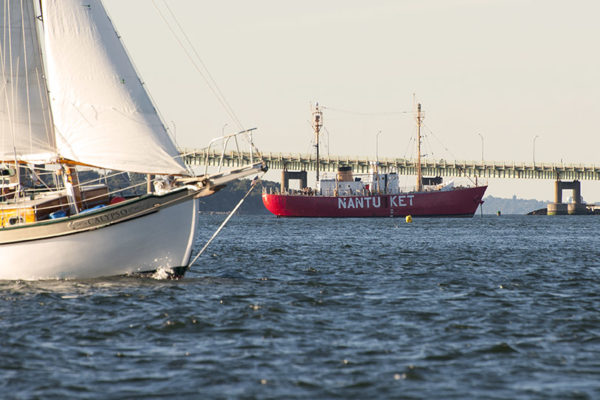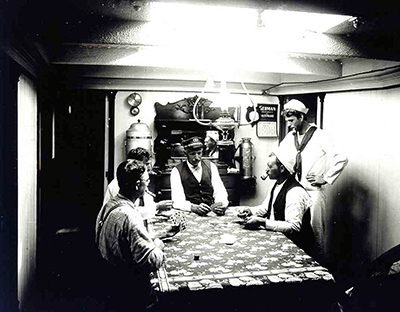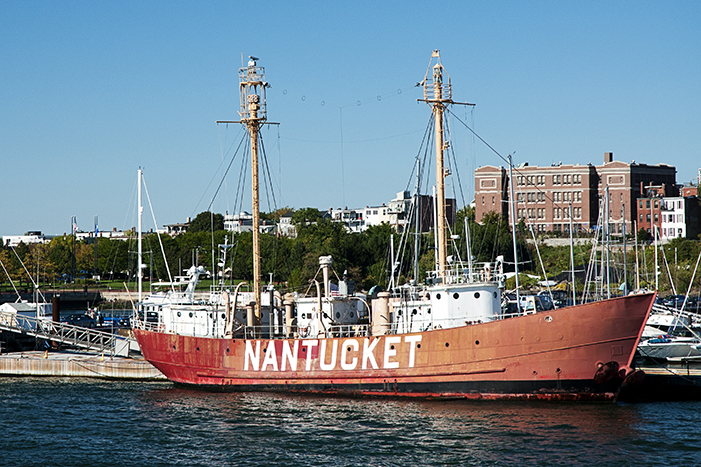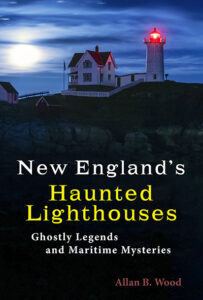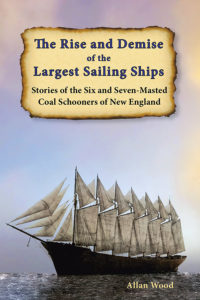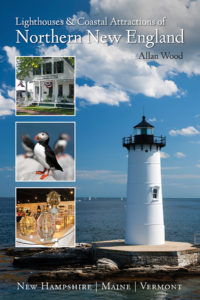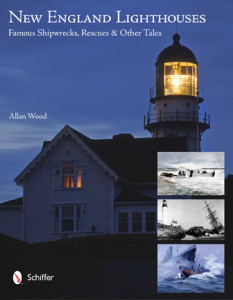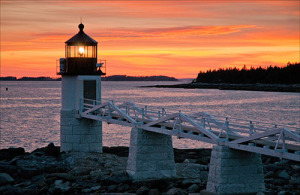Lighthouse History: Mobile Lighthouses or Lightships
Where lighthouses were built on specific locations as navigational guides, to aid mariners in distress, or assist mariners in inclement weather, lightships were needed in the late 1800s as mobile floating lighthouses at dangerous locations, or within busy shipping channels where it was not possible to build a lighthouse. The crews of these relatively small vessels would endure extremely cramped and lonely conditions away from the mainland, along with extreme weather conditions in fog, violent storms, hurricane-force winds, swelling seas, and natural formations like ice floes that could rip the ship’s hull. If a storm approached and vessels were trying to seek safety in nearby harbors (or even in clear weather), lightships would remain at anchor at designated stations during the storm and provide the flashing light or sound their fog horn to help each vessel navigate to safety.
In the 1930s, radio was used where the lightship was anchored at a designated coordinate. The ship would flash its light beacon at night and bounce the radio signal across the waves. The trans-Atlantic vessel, entering or leaving its destination, say a harbor, would steer towards the signals of the radio beacon or flashing light directly in the path of the guiding lightship. A lookout was posted on the incoming vessel, whose purpose was to locate the lightship from the signals received and adjust the ship’s course to avoid collision with the stationary lightship. The lightship, anchored in its position, was quite vulnerable because it could quickly be involved in a direct collision with a misguided vessel. Those crew members aboard lightships knew they were in the most dangerous and vulnerable position, as many lightships met with tragedy in colliding with ships.
It was exceptionally physically trying and emotionally challenging for crew members of lightships. These men were known as sailors who never went to sea, and little of their existence was brought to public understanding unless tragedy or severe sickness became their fate. Many lightships were stationed offshore where they could not participate in life on land but could hear society at work and play. They would be moored over treacherous reefs or mark the narrow entrance to a channel or harbor. They would be stationed on board ship at least 3 out of 4 weeks each month, and with weather permitting, would be given shore leave for up to ten days. The most popular man would be the one coming back onto the lightship from the mainland with the latest newspaper so the crew could receive the most recent news. Regulations would not permit visitors, especially family members of the crew, to board the ship, as these families had to endure long periods of absence from their loved ones.
During the grueling winter months, frequent nor’easters pound the coastline and violently toss the exposed lightships, making even the most seasoned crewmembers seasick. The constant ear-deafening sounds of the ship’s fog signals and nauseating diesel fumes made the experience even more uncomfortable.
Working on a lightship was known as the most hazardous profession in the marine service. New England had its share of accidents and tragedies. To make matters worse, the early lightships of the late 1800s and early 1900s were usually in deteriorating conditions due to a lack of government funding.
One of the worst tragedies in Lightship history involved the Nantucket Lightship LV-117. The 130-foot Lightship was built in 1930 and went into service in 1931 as the largest lightship ever built. It carried the most modern signaling equipment of the time. On May 15, 1934, with heavy fog, the RMS Olympic collided with the Nantucket Lightship, cutting it in half. Seven of the eleven lightship crewmen drowned in the chilly waters, and four were rescued. A replica of the lightship, the Nantucket LV-112, was built and became the longest-serving lightship until she was decommissioned in 1975.
Exploring the United States Lightship Museum in Boston
With the necessary funding provided over the years, the Nantucket LV 112 remains the floating United States Lightship Museum. It has been docked in East Boston at the East Boston Shipyard and Marina since 2009. She is a proud testament to the men who served in the most perilous naval positions.
If you are interested in visiting this remarkable floating museum:
Mailing Address:
United States Lightship Museum
(Nantucket Lightship LV-112)
Post Office Box 454
Amesbury, MA 01913-0010
1 (617) 797-0135
FAX 1 (603) 394-0285
rmmjr2@comcast.net
Address to Visit the Lightship Museum:
Boston Harbor Shipyard and Marina
256 Marginal Street
East Boston, MA 02128
http://www.nantucketlightshiplv-112.org/
Regards,
Allan Wood
Books to Explore
New England’s Haunted Lighthouses:
Ghostly Legends and Maritime Mysteries
Discover the mysteries of New England’s haunted lighthouses! Uncover ghostly tales of lingering keepers, victims of misfortune or local shipwrecks, lost souls, ghost ships, and more. Many of these accounts begin with actual historical events that later lead to unexplained incidents.
Immerse yourself in the tales associated with these iconic beacons!
The Rise and Demise of the Largest Sailing Ships:
Stories of the Six and Seven-Masted Coal Schooners of New England.
In the early 1900s, New England shipbuilders constructed the world’s largest sailing ships amid social and political reforms. These giants were the ten original six-masted coal schooners and one colossal seven-masted vessel, built to carry massive quantities of coal and building supplies and measured longer than a football field! This self-published book, balanced with plenty of color and vintage images, showcases the historical accounts that followed these mighty ships.
Available also from bookstores in paperback, hardcover, and as an eBook for all devices.

Book – Lighthouses and Coastal Attractions in Southern New England: Connecticut, Rhode Island, Massachusetts
Lighthouses and Coastal Attractions of Southern New England:
Connecticut, Rhode Island, and Massachusetts.
This 300-page book provides memorable human interest stories from each of the 92 lighthouses. You can explore plenty of indoor and outdoor coastal attractions, including whale-watching excursions, lighthouse tours, windjammer sailing tours, parks, museums, and even lighthouses where you can stay overnight. You’ll also find plenty of stories of hauntings around lighthouses.
Lighthouses and Coastal Attractions of Northern New England:
New Hampshire, Maine, and Vermont.
This 300-page book provides memorable human interest stories from each of the 76 lighthouses. It also describes and provides contact info for plenty of indoor and outdoor coastal attractions and tours. These include whale watching, lighthouse tours, unique parks, museums, and lighthouses where you can stay overnight. There are also stories of haunted lighthouses in these regions.
New England Lighthouses:
Famous Shipwrecks, Rescues & Other Tales
You’ll find details of the collision of the Nantucket Lightship with the RMS Olympic. This image-rich book also contains vintage images provided by the Coast Guard and various organizations and paintings by six famous Coast Guard artists.
You can purchase this book and the lighthouse tourism books from the publisher Schiffer Books or in many fine bookstores such as Barnes and Noble.
Copyright © Allan Wood Photography; do not reproduce without permission. All rights reserved.
Join, Learn, and Support The American Lighthouse Foundation
